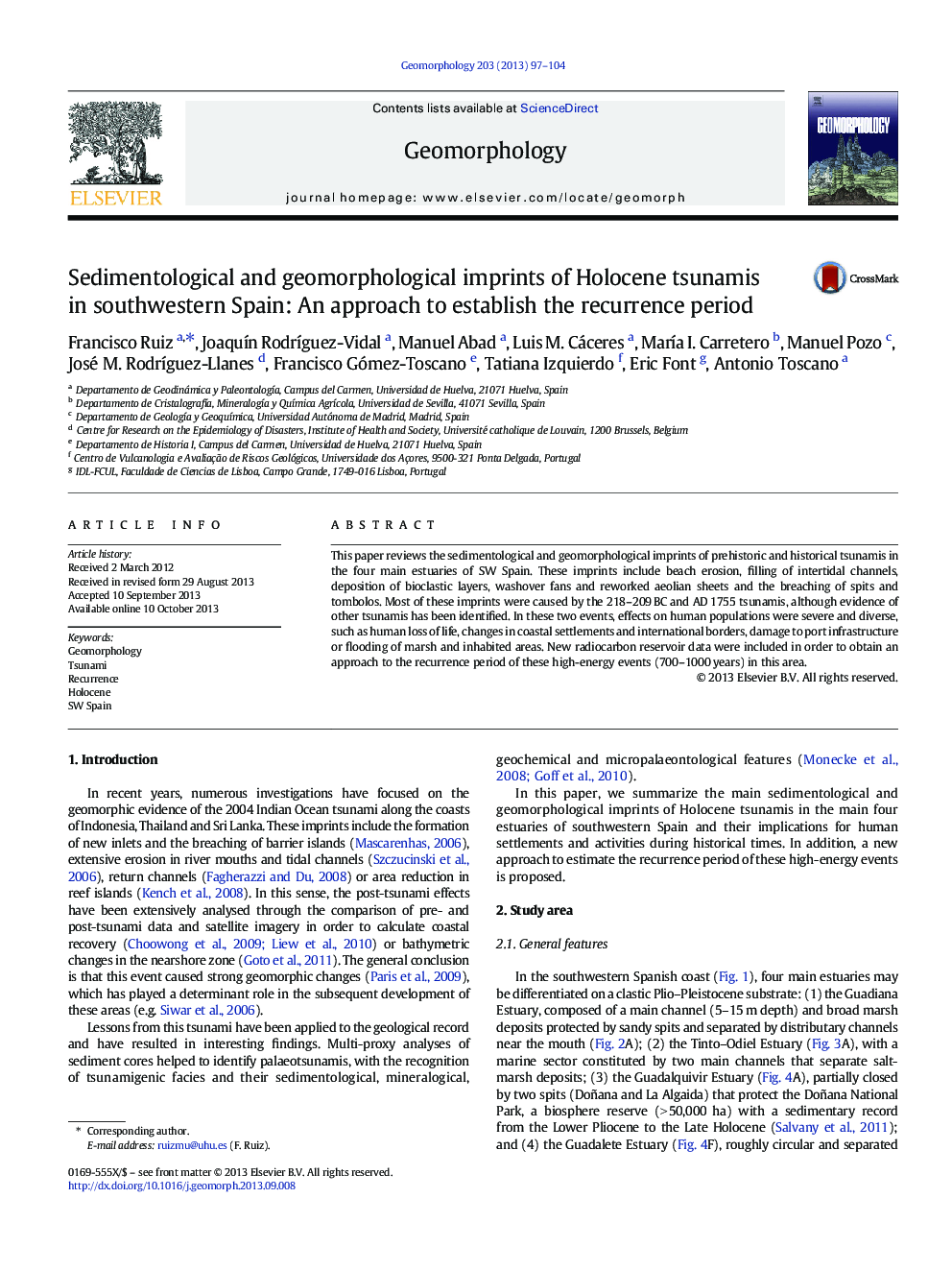| Article ID | Journal | Published Year | Pages | File Type |
|---|---|---|---|---|
| 6432825 | Geomorphology | 2013 | 8 Pages |
â¢We review the record of Holocene tsunamis in the southwestern estuaries of Spain.â¢We analyze littoral formations, boreholes, historical maps and documents.â¢We infer the effects of these high-energy events in different coastal palaeoenvironments.â¢Most of the studied imprints were caused by the 218-209 BC and AD 1755 tsunamis.â¢New radiocarbon reservoir data helps to establish a recurrence period of 700-1000 years.
This paper reviews the sedimentological and geomorphological imprints of prehistoric and historical tsunamis in the four main estuaries of SW Spain. These imprints include beach erosion, filling of intertidal channels, deposition of bioclastic layers, washover fans and reworked aeolian sheets and the breaching of spits and tombolos. Most of these imprints were caused by the 218-209Â BC and ADÂ 1755 tsunamis, although evidence of other tsunamis has been identified. In these two events, effects on human populations were severe and diverse, such as human loss of life, changes in coastal settlements and international borders, damage to port infrastructure or flooding of marsh and inhabited areas. New radiocarbon reservoir data were included in order to obtain an approach to the recurrence period of these high-energy events (700-1000Â years) in this area.
